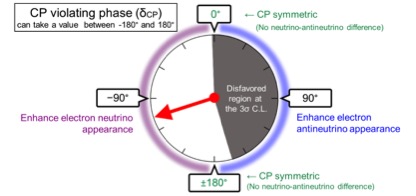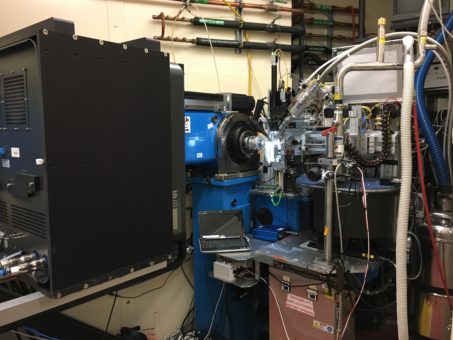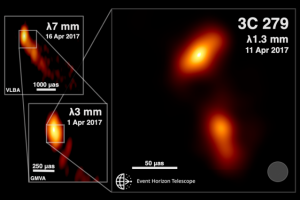Science
T2K Results Restrict Possible Values of Neutrino CP Phase

Figure 1: The arrow indicates the value most compatible with the data. The gray region is disfavored at 99.7% (3-omega) confidence level. Nearly half of the possible values are excluded.
- Read more
- 318 reads
Air pollution remains low as Europeans stay at home

Nitrogen dioxide concentrations over Europe
- Read more
- 291 reads
NASA Reports Arctic Stratospheric Ozone Depletion Hit Record Low in March
src="/sites/en.worldpeoplenews.com/files/news/march12_2020_colorbarjpg_0.jpg" width="277" height="300" alt="march12_2020_colorbarjpg_0.jpg" />
Arctic stratospheric ozone reached its record low level of 205 Dobson units, shown in blue and turquoise, on March 12, 2020.Arctic stratospheric ozone reached its record low level of 205 Dobson units, shown in blue and turquoise, on March 12, 2020.
- Read more
- 290 reads
Staff at Berkeley Lab’s X-Ray Facility Mobilize to Support COVID-19-Related Research

ALS Beamline 5.0.1, pictured here, is one of the beamlines that has been enlisted for COVID-19-related experiments.
- Read more
- 310 reads
Earth-Size, Habitable-Zone Planet Found Hidden in Early NASA Kepler Data

This artist's concept shows what exoplanet Kepler-1649c could look like on its surface. The planet is the closest to Earth in size and temperature found yet in data from the Kepler space telescope.
- Read more
- 360 reads
Event Horizon Telescope observes a black hole-powered jet

The multi-wavelength 3C 279 jet structure is seen in April 2017. The wavelengths (λ) in millimeters, observation days, and arrays are noted in each panel.
- Read more
- 313 reads
Gemini Detects Most Energetic Wind from Distant Quasar

The image at left shows an artist’s conception of the central portion of the galaxy that hosts the quasar SDSS J135246.37+423923.5 viewed at optical wavelengths. Thick winds obscure our view, and imprint signatures of the energetic outflow on the SDSS spectrum. The image at right shows the same artist’s view at infrared wavelengths, as seen by the Gemini GNIRS detector. The thick outflow is transparent at infrared wavelengths, giving us a clear line of sight to the quasar. The infrared spectrum yields the quasar redshift, and from that reference frame, we measured the record-breaking outflow velocity.
- Read more
- 324 reads
New research helps explain why the solar wind is hotter than expected

The solar wind causes events such auroras, like this one photographed by a U.S. astronaut after docking with the International Space Station. It can also interfere with satellite communications and distort the magnetic field of earth.
- Read more
- 343 reads
Discovery of a Young Blazar Produced by the Merger of Two Galaxies

The galaxy TXS 2116-077 (seen on the right) collides with another spiral-shaped galaxy of similar mass, creating a relativistic jet in TXS 2116-077's centre. Both galaxies have AGNs. Shown here is an image of the emission in the H-alpha line with superposed isophotes of the infrared emission in the J band. Also shown in black lines is the region where a spectrum was obtained with ISIS on the WHT and OSIRIS on the Gran Telescopio Canarias (GTC). Figure extracted from Paliya et al., 2020, ApJ, 892, 133.
- Read more
- 316 reads
NASA Successfully Tests Telemetry Signal on Agency’s First All-Electric X-plane

Telemetry testing begins on the X-57 Maxwell, NASA’s first all-electric X-plane, as the operations crew at NASA’s Armstrong Flight Research Center records the results. Telemetry testing is a critical phase in X-57’s functional test series. In addition to confirming the ability of the X-57 aircraft to transmit speed, altitude, direction, and location to teams on the ground, telemetry testing also confirms the ability to transmit mission-critical-data, such as voltage, power consumption, and structural integrity. X-57’s goal is to help set certification standards for emerging electric aircraft markets.
- Read more
- 307 reads
Human Rights
Fostering a More Humane World: The 28th Eurasian Economic Summi

Conscience, Hope, and Action: Keys to Global Peace and Sustainability

Human Rights Event: Discussing the Future of Governance Experts from 56 Countries Participated in the ICCJW

Ringing FOWPAL’s Peace Bell for the World:Nobel Peace Prize Laureates’ Visions and Actions

Protecting the World’s Cultural Diversity for a Sustainable Future

Global Celebration of International Day of Conscience: Dr. Hong, Tao-Tze Unites Participants from 63 Nations

Puppet Show I International Friendship Day 2020